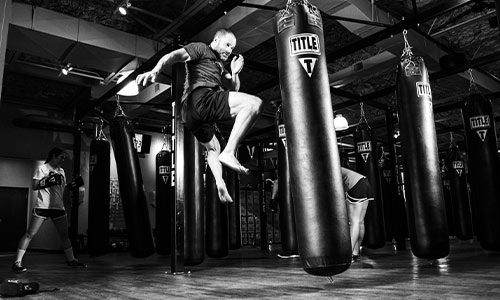The Question of Training to Failure
The concept of failure in training is often misunderstood and misapplied. People often expect amazing results from their workouts, but there are various reasons why they may not see those results.
When I first started lifting weights, I believed that pushing myself to failure was the ultimate goal. Looking at how Arnold Schwarzenegger trained and the culture of bodybuilding, failure seemed to be the desired outcome during my workouts. This mentality of viewing resistance exercise in absolute terms stayed with me for years. I believed that unless I felt like a failure with my muscles and needed a spotter to save me from being crushed by a barbell, my workouts were not successful.
However, I've come to realize that pushing your muscles to the point where you can't lift a weight is not the purpose of working out. While increasing muscle mass is important, it's also crucial to prioritize overall health and see amazing results through a well-rounded workout routine and disciplined lifestyle.

Is Training to Failure Necessary for Muscle Growth?
It's widely understood that hypertrophy is crucial for improving physique and performance among strength athletes. Training to failure may activate a large number of motor units and potentially enhance muscle hypertrophy, as suggested by Willardson et al., who have produced high-quality literature on failure-based training. This method can indeed contribute to muscle growth.
However, Willardson also cautions against repeatedly training to failure over an extended period due to the risk of overuse injuries and overtraining. The lifter's training status and goals should guide the decision-making process throughout their training journey.
Breaking the 90 Percent Max Rule
An important factor in training to failure is the effective progression that turns failure into a success story over time. Intensity refers to the percentage of weight lifted in relation to an individual's one-repetition maximum (1-RM). Training to failure with heavy weights may not significantly enhance hypertrophy and could even impede strength gains. When aiming for failure, it's best to avoid exercises like squats, bench presses, and deadlifts.
How Often Should You Be Training to Failure?

Different categories can determine a trainee's current level, and their training methods may vary depending on whether they are beginners, intermediates, or advanced individuals. If you're a beginner or have been training for less than two years, it's advisable not to push yourself to muscle failure. Instead, aim for a level of fatigue just below failure. For example, set a goal rep range, such as 8 reps, and ensure you have one extra rep in reserve to avoid burnout.
It's important to choose what you want to work against to gain strength and stop guessing. Start living a healthier lifestyle with a more informed approach to training.



Submit a Comment